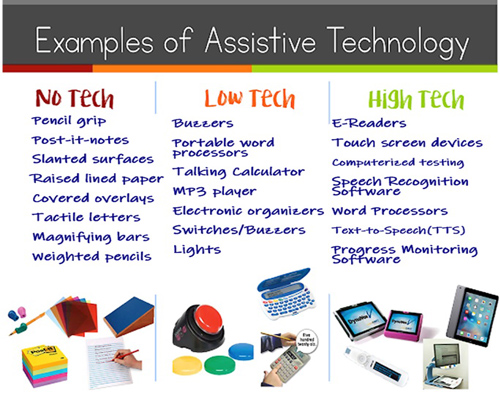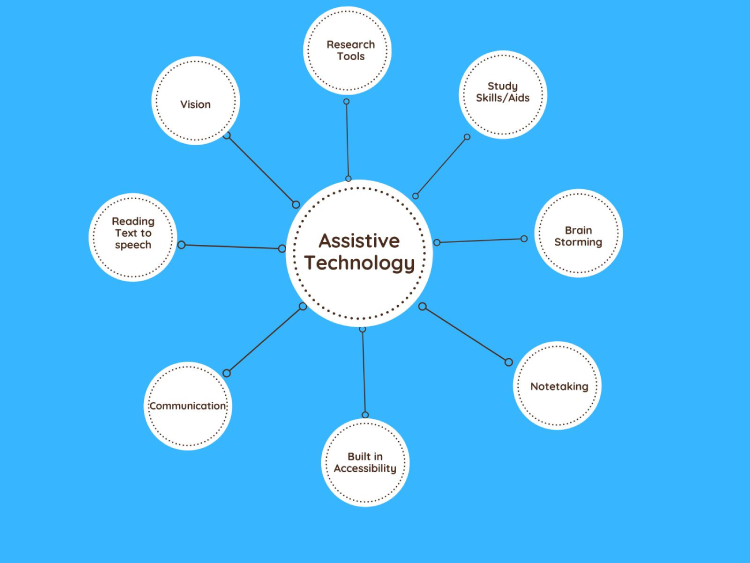Assistive Technology
Assistive Technology stands for anything that helps us to learn effectively. According to WHO, it enables and promotes inclusion and participation, especially of persons with disability, aging populations, and people with non-communicable diseases. The primary purpose of assistive products is to maintain or improve an individual’s functioning and independence, thereby promoting their well-being. WHO estimates that today 2.5 billion people need one or more assistive products. After the week’s presentation, I realized that not only for people with disability but is helpful for people everyone. This technology may provide audio for students who cannot speak or can also support those who have difficulty in reading or writing. So, examples of this include hearing aid, writing aids, wheelchairs, spectacles and so on.

When I was looking at these examples mentioned in the above image and also the examples given by my peers. I noticed that there are so many tools I have also used in my life. First and foremost I would like to mention E-readers, I used them a lot during that part of my life when I was learning English. Being a second-language speaker of English, I practiced using E-readers and TTS to learn the correct pronunciation of words. Secondly, I have used pencil grip in my classrooms for students who have difficulty in writing and building pressure on the pencil. But as everything has its positive side and challenges, I have observed a few which I would like to mention here…

ADVANTAGES
- Improves students performances
- Improves communication
- Promotes independence
- Boosts confidence
- Eases performance of daily activities
CHALLENGES
- Financial Barrier
- Limited training
- Lack of family involvement
- Gaps in demand/need and supply
- Lack of resources
Other than the changes mentioned above, the barriers also include a lack of appropriate staff training and support, negative staff attitudes, inadequate assessment and planning processes, difficulties procuring and managing equipment, and time constraints. These challenges differ from country to country because in the place where I come from… we face financial barriers and our schools are not very well equipped to help students… generally, students buy their own assistive technologies.
To conclude, I would just like to mention that assistive technology helps to safeguard the people we support, increasing people’s independence, privacy and dignity by enabling care to be delivered only when needed. It also helps people to make their own choices and decisions about their lives.
— Thank You
Thanks for sharing the blog post sristy. use of assistive technology is very important in the classroom because in the classroom there are many students who have different abilities to learn and some students have disabilities. Assistive technologies id the best way to teach special students. but one of the biggest challenges is the lack of knowledge about the use of assistive technology. I think that schools and policymakers must provide training to the teacher so that they can teach students according to their level.
A very thoughtful post, Shristy – I agree with many of the points you raise. While I feel the inclusivity provided by AT is so important, I am particularly concerned with the high price tags of these tools. As you mention as well, staff training is something that is underdeveloped and concerning.